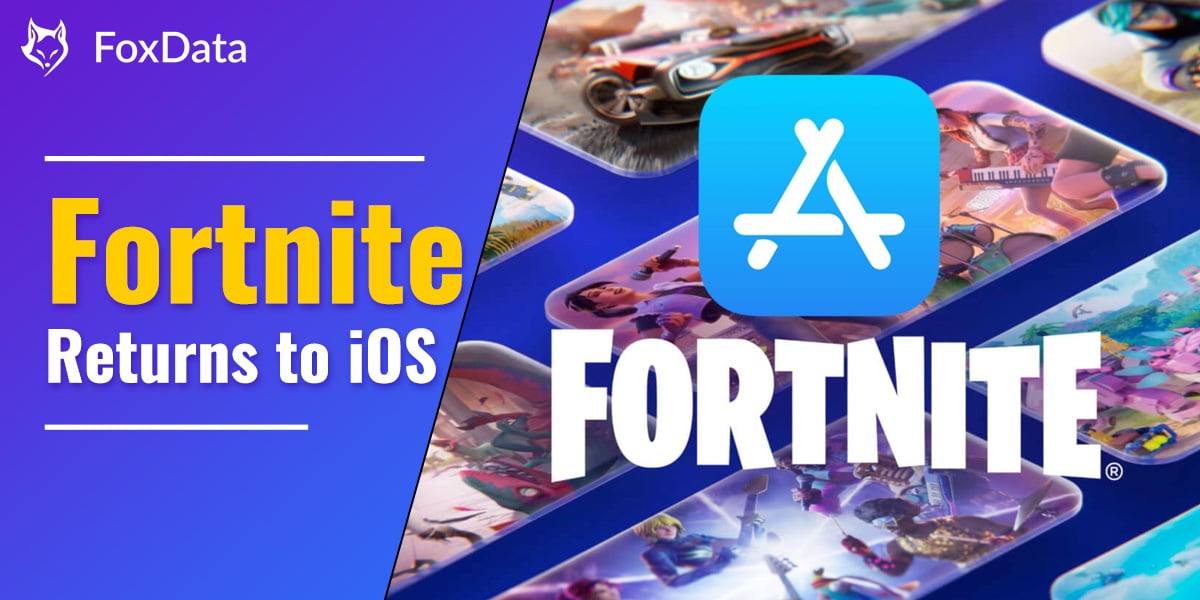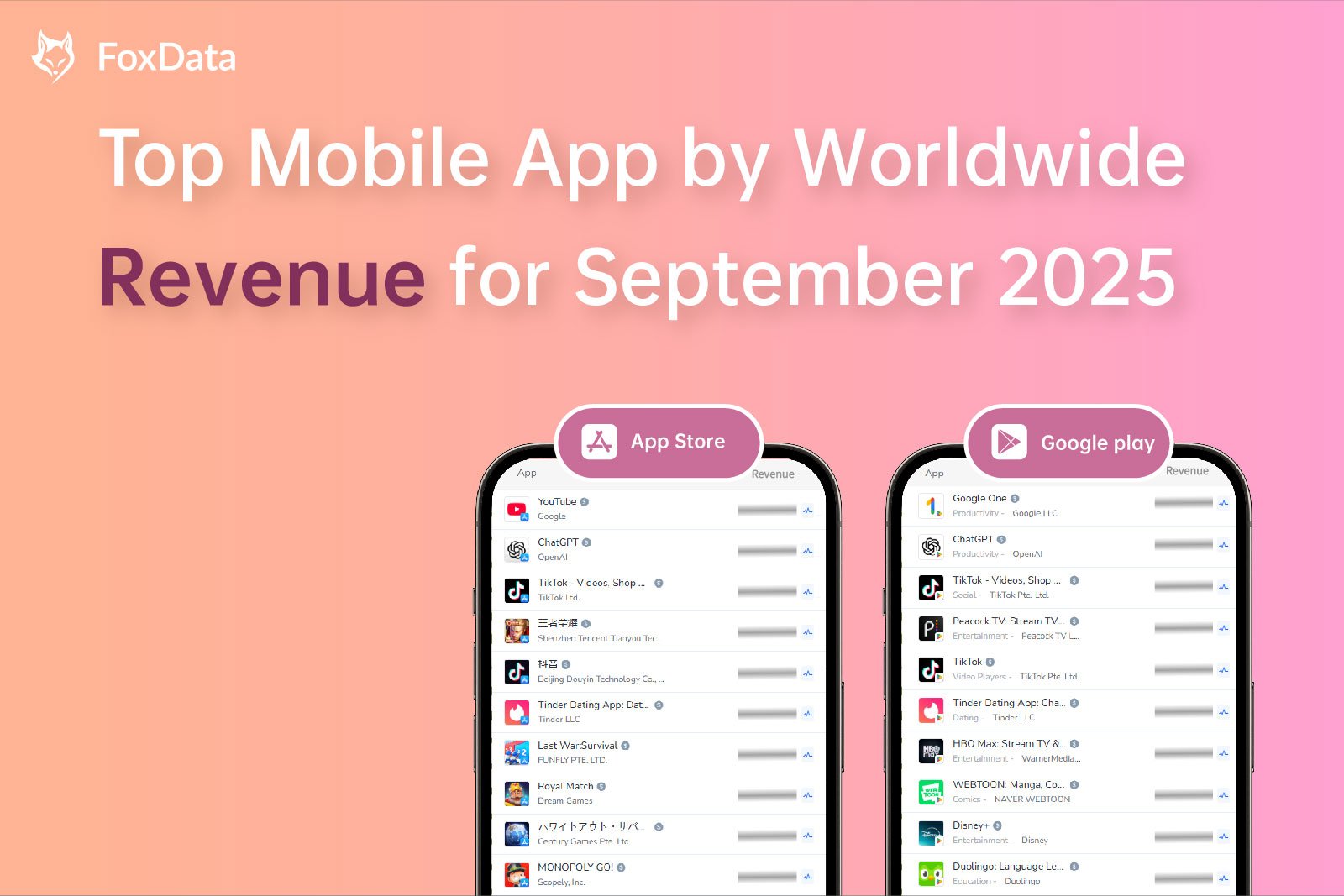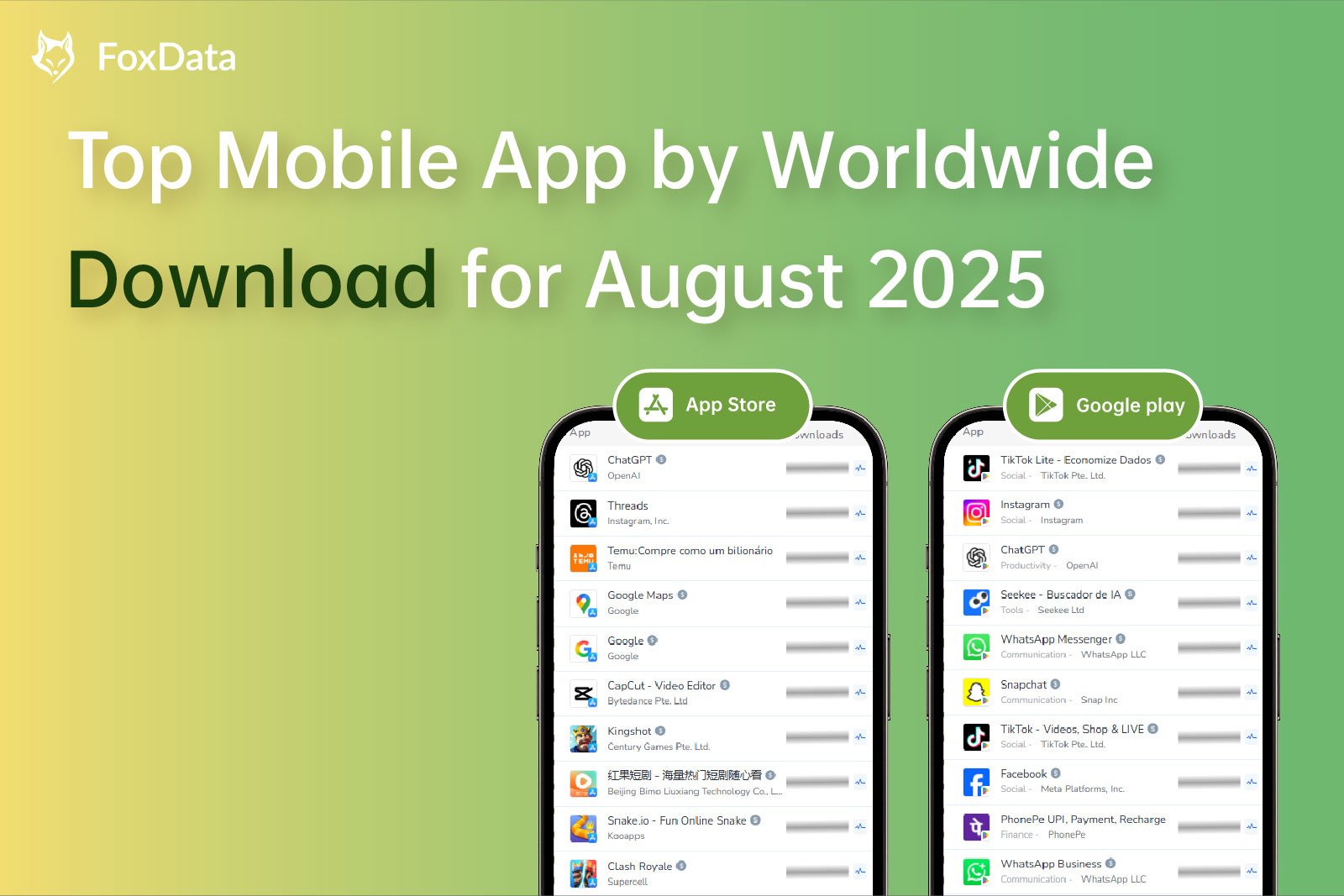A Global Gaming Icon Returns to Mobile
In early 2025, Fortnite made headlines once again—not for a celebrity collaboration or a virtual concert, but for its long-awaited return to iOS. For the mobile gaming industry, this event went far beyond nostalgia. It marked a pivotal turning point in how blockbuster games navigate app distribution, user acquisition, and monetization in today’s fragmented digital landscape.
Developed by Epic Games and originally released in 2017, Fortnite helped define the “battle royale” genre and evolved into a global phenomenon. More than a game, it functions as a virtual hub for entertainment, boasting over 400 million registered users and featuring live events, movie crossovers, and user-generated content across platforms.
Fortnite’s removal from the App Store in 2020 followed a legal dispute with Apple over in-app payment policies. Its return in 2025—facilitated by EU digital market regulations and new alternative distribution channels—signaled not just a comeback for Fortnite, but a milestone moment for the mobile games industry as a whole.
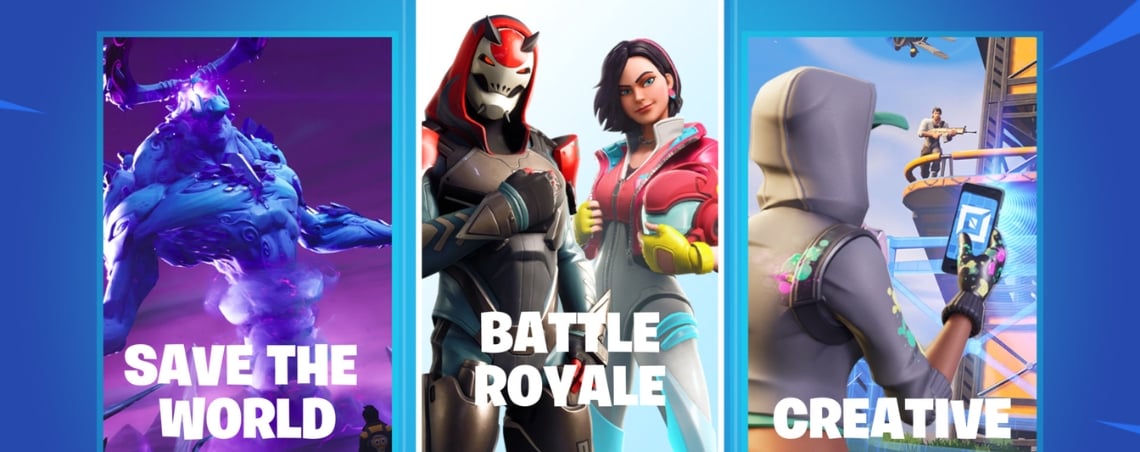
Data Confirms the Hype
According to FoxData's app intelligence platform, Fortnite quickly climbed to the top of the U.S. App Store's free games chart and maintained its #1 position for over six consecutive days following its relaunch. The data indicates strong pent-up demand and the enduring strength of cross-platform intellectual property.
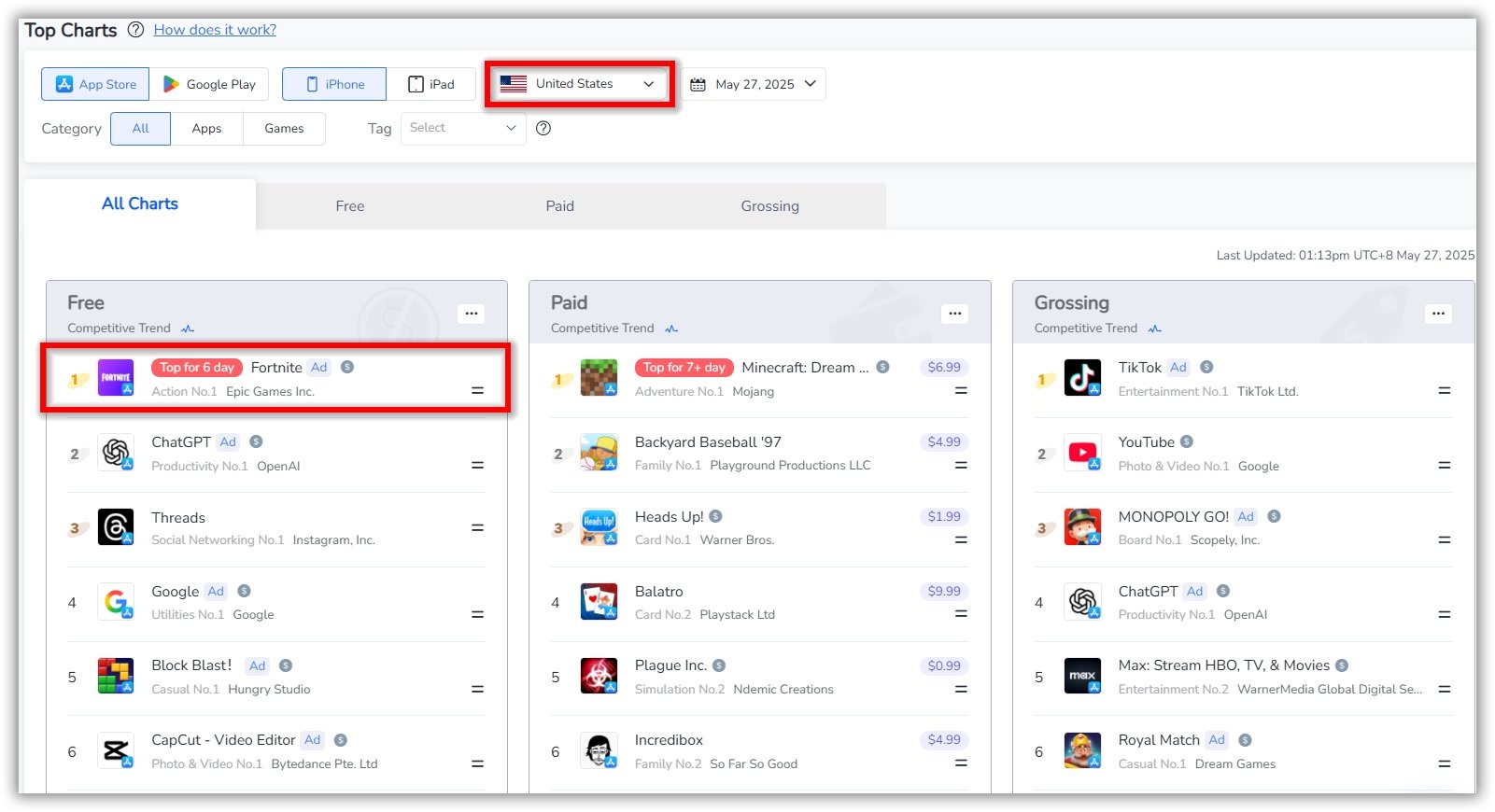
👉 Discover More: Global Mobile App Download Rankings – April 2025|FoxData Report
FoxData shows Fortnite dominating the U.S. iPhone market:
- Keyword Search Volume: 97
- Daily Installs via Keyword: 254,464
- Max Reach: Over 14.9 million potential users
Currently ranked #1 in both the Games and Adventure categories, Fortnite’s install conversion rate stands at an impressive 43.18%. This means nearly half of users who search for the game proceed to install it. With over 109,000 average daily installs and 1,703 ranked keywords, Fortnite maintains a powerful App Store search presence.
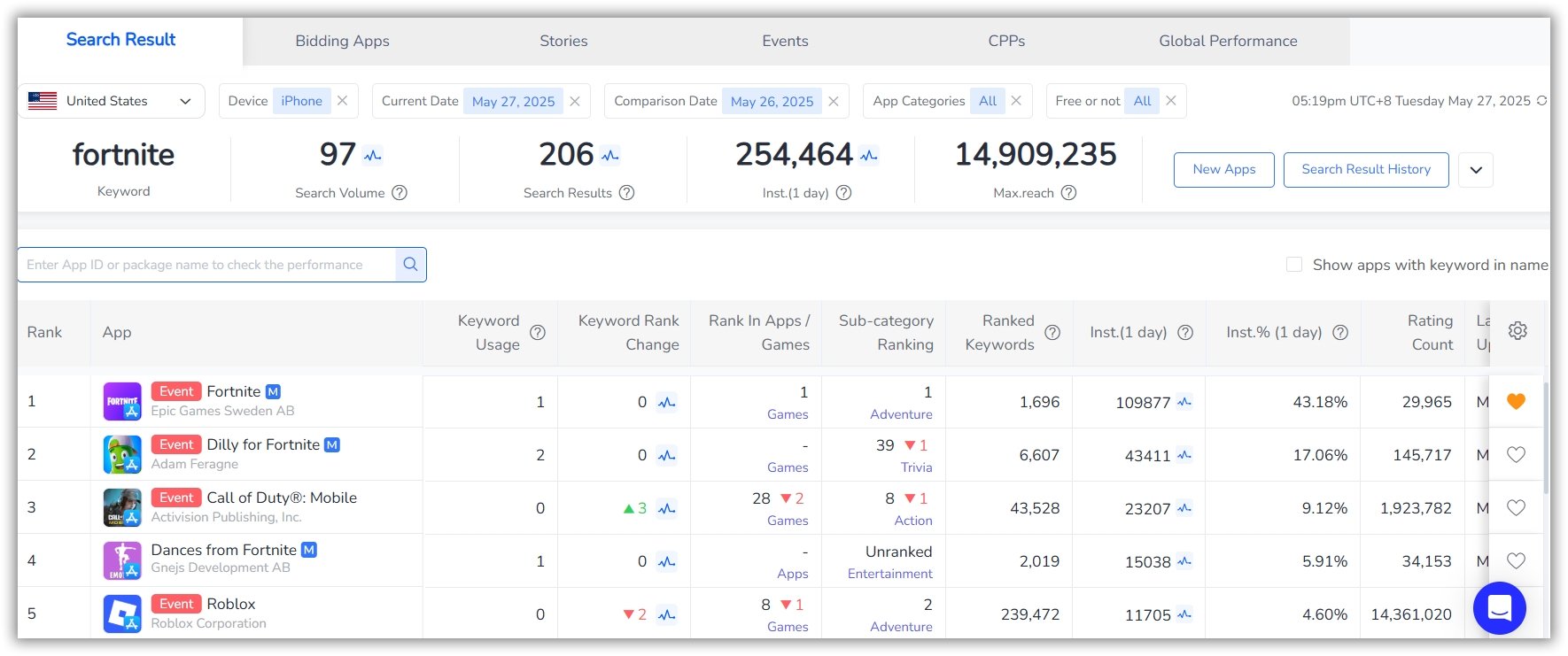
🔎 Find Out More: A Comprehensive Guide to Niche Keywords Research With Free ASO Tool
App Stores Are No Longer the Only Gatekeepers
Back in 2020, centralized app stores were the primary channel for mobile distribution. By 2025, the rules have changed. Sideloading, Progressive Web Apps (PWAs), and legally mandated third-party marketplaces—such as those introduced by the EU’s Digital Markets Act—have opened new doors for developers.
Epic Games seized this opportunity, opting for a multi-channel re-entry strategy instead of relying solely on traditional app stores. This allowed them to regain visibility while maintaining greater control over distribution.
For mobile marketers, this reinforces a new truth: App Store Optimization (ASO) is no longer sufficient. Growth strategies must now incorporate:
- Web-to-app conversion funnels
- Seamless cross-platform onboarding
- Behavior-driven retargeting flows
From Relaunch to Re-Entry: Precision Over Presence
Epic Games didn’t just flip a switch and relaunch Fortnite. They engineered a full-scale campaign, transforming a technical return into a marketing masterstroke.
Key tactics included:
- Teaser campaigns and influencer hype on TikTok and YouTube Shorts
- Regionally staggered rollouts to maximize media coverage
- Rewards for returning players through account-linked perks
- Timed pop-culture crossovers to capture broader attention
This approach reinforces a critical lesson: Brand equity alone won’t sustain momentum after absence. Successful re-engagement requires personalization, timing, and ongoing value delivery.
High-Frequency Content Is Now the Norm
Fortnite built its success on rapid content delivery—seasonal updates, limited-time events, and constant cosmetic refreshes. In 2025, this approach is no longer a unique advantage; it's a requirement. Games that fail to provide fresh and reactive content risk rapid user attrition.

Black Friday · Up to 50% Off FoxData
Unlock our biggest discount of the year.
Save up to 50% on FoxData plans from Nov. 21 to Dec. 8 and power up your app growth.
Mobile Is No Longer a Silo
One of Fortnite’s enduring strengths is its cross-platform integration. Players can move between mobile, PC, console, and cloud seamlessly without losing progress. This continuous user experience enhances engagement and lifetime value.
More mobile-first games are now embracing:
- Cross-platform user reactivation
- Shared in-game economies
- Multi-device progression systems
According to FoxData's User Retention Analysis, Fortnite achieved a 48.59% Day 1 retention rate and sustained 17.85% on Day 7 after its iOS return. These figures outperform industry averages (typically 30–40% on Day 1) and highlight effective onboarding and sustained user interest.
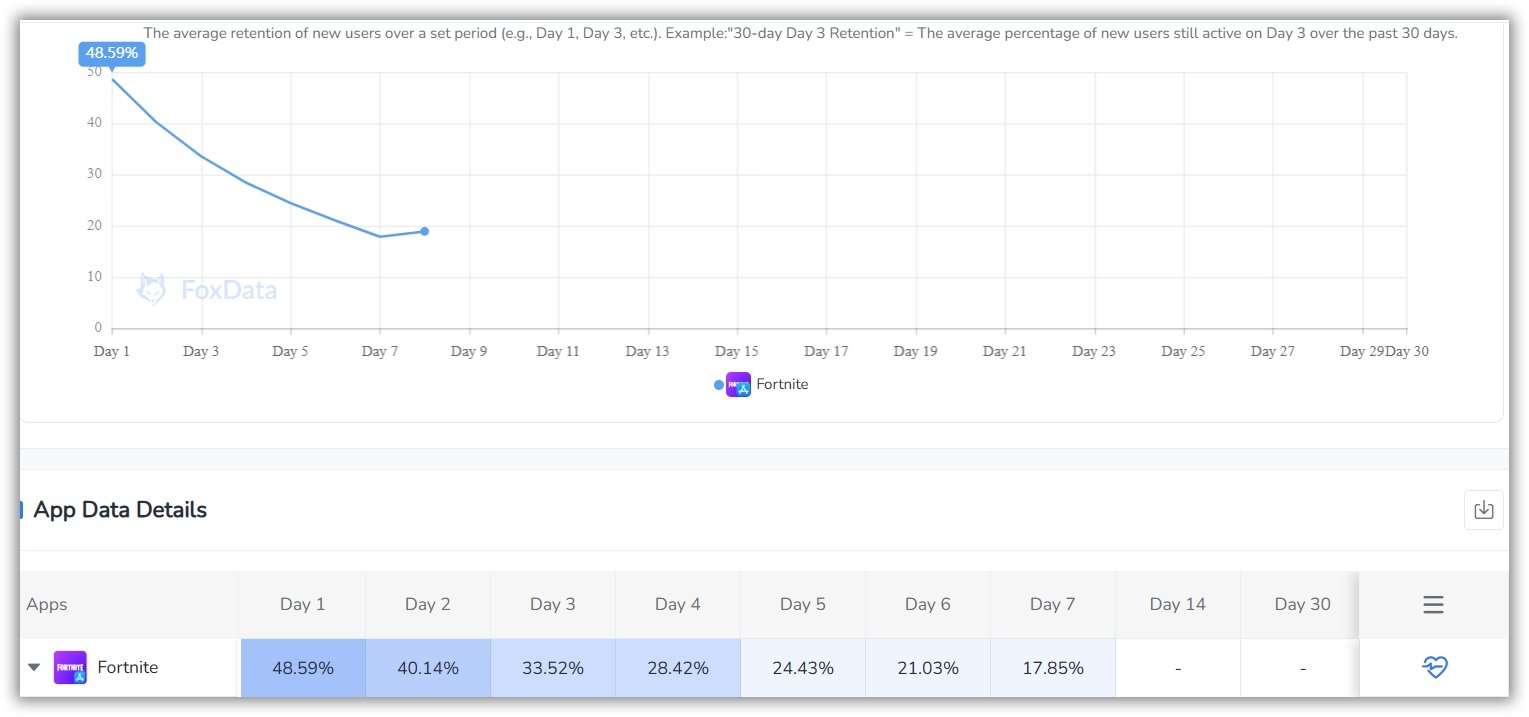
Fornite: Retention Trend Analysis
👉 Learn More: How to Improve Your User Engagement with FoxData's "Users Retention Analysis"
Targeting Behavioral Moments, Not Just Demographics
Modern mobile growth is less about age or gender, and more about when, why, and how users engage.
Fortnite’s return focused on behavioral triggers:
- High-install periods
- Post-holiday device activity
- Social virality cycles
Surprisingly, FoxData's Demographic Analysis, reveals Fortnite’s U.S. player base is now 55% female, challenging traditional assumptions about shooter games. Factors such as stylized graphics, deep customization, and community-oriented features have broadened appeal. This indicates that inclusive design, emotional tone, and social mechanics can dramatically expand a game’s total addressable market.
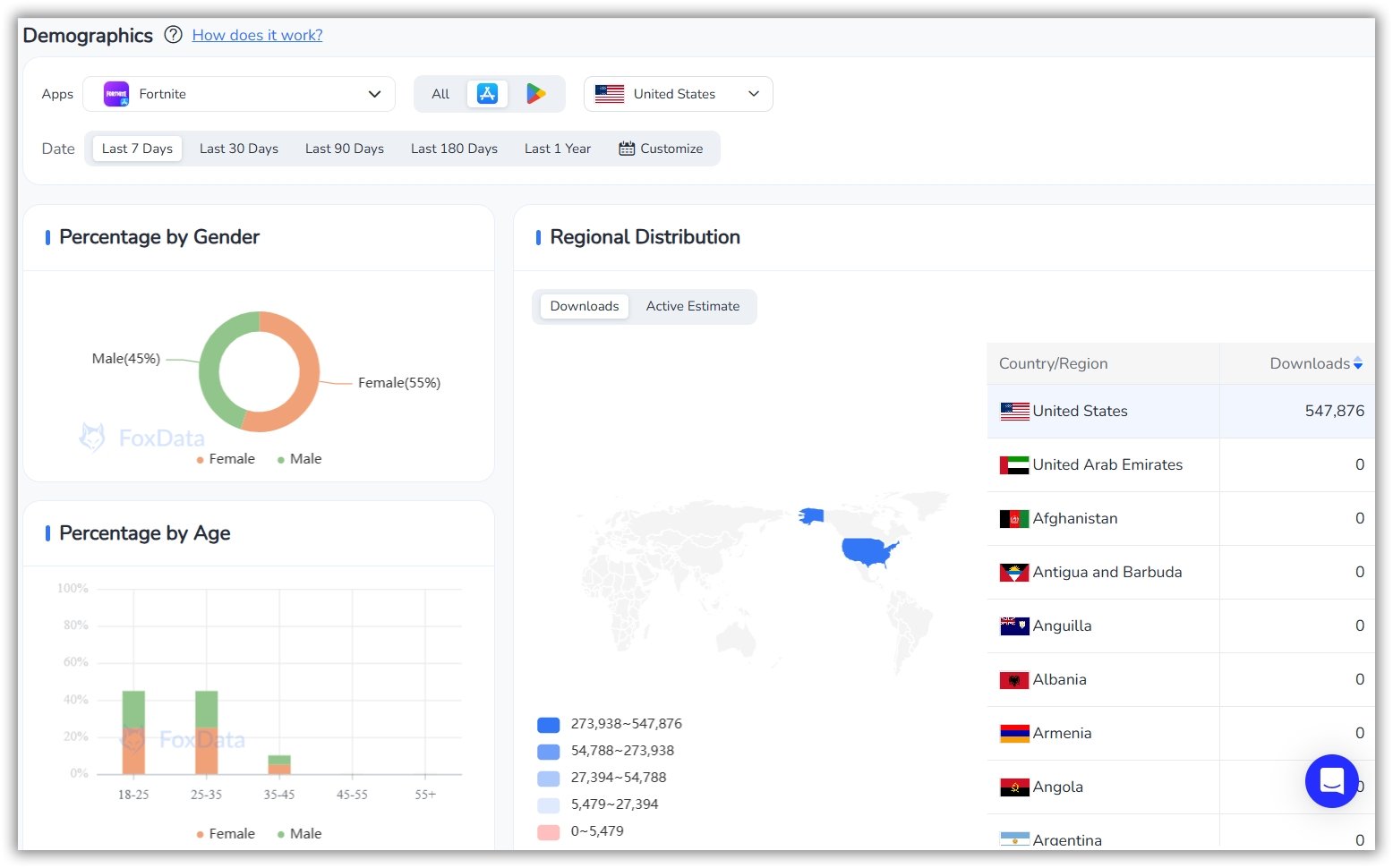
Fornite: Demographics
A Masterclass in Reclaiming Market Share
Fortnite’s iOS return wasn’t guaranteed—it was deliberate, strategic, and meticulously executed. FoxData Top Charts report a major surge beginning May 20, 2025, peaking on May 25 with 96,925 daily downloads. Over seven days, Fortnite racked up 547,876 installs, cementing its comeback.

Fornite: Downloads Trend
🗝️ What This Signals for Mobile Gaming in 2025:
- Multi-channel distribution is essential
- Cross-platform fluidity boosts lifetime value
- Behavioral insights drive reactivation
- High-frequency content keeps users engaged
- Data-led launch pacing ensures maximum traction
Fortnite's return to iOS wasn’t just a victory for Epic—it was a blueprint for future mobile game growth. The strategies used—data-driven rollout, diversified distribution, and inclusive design—represent the new standard for thriving in the hyper-competitive mobile market.
Curious how your app compares in keyword performance, user engagement, or retention metrics?
🔍Explore FoxData today.
 Keywords Research
Keywords Research  Reviews Management
Reviews Management  User Activity Monitoring
User Activity Monitoring  User Retention Analytics
User Retention Analytics  Global Market Research Top Charts
Global Market Research Top Charts  Trending Apps Bidding Keyword Analysis Ad Creatives Analysis AI App Marketing
Trending Apps Bidding Keyword Analysis Ad Creatives Analysis AI App Marketing  Keyword Tools Rating & Reviews Tools App Marketing Research Store Insights Est. App Downloads Est. App Revenue App Data Analysis
Keyword Tools Rating & Reviews Tools App Marketing Research Store Insights Est. App Downloads Est. App Revenue App Data Analysis 

